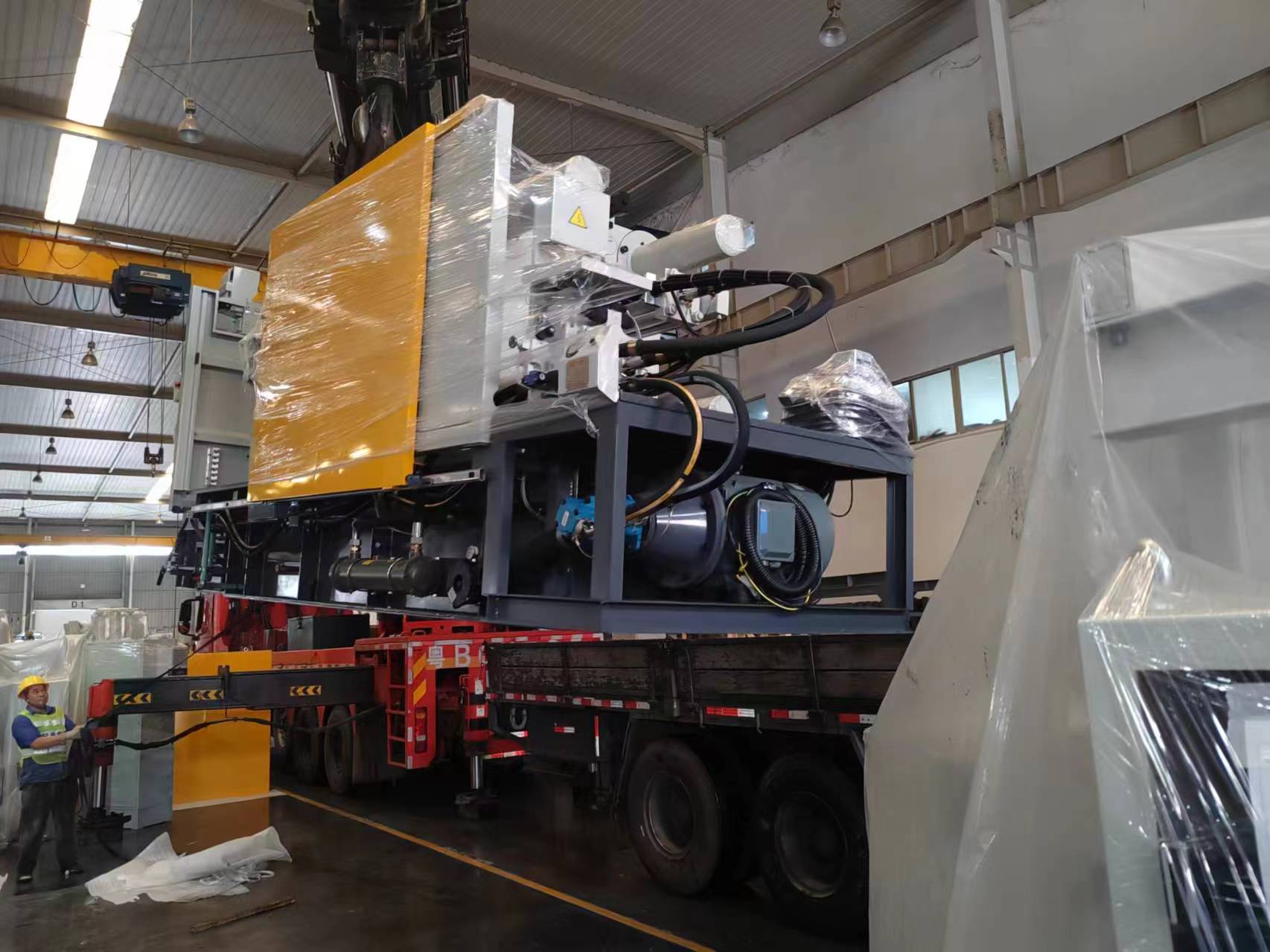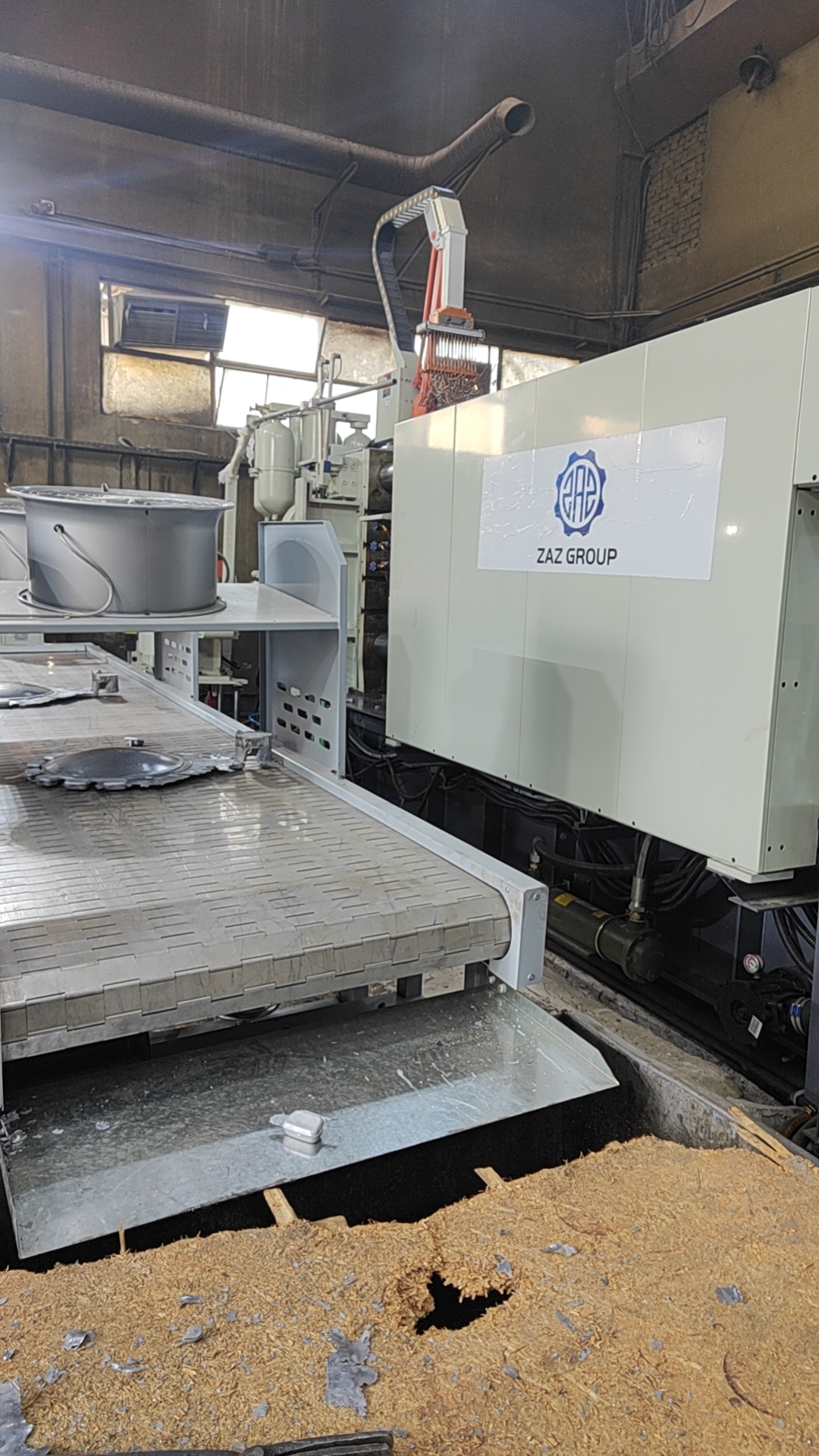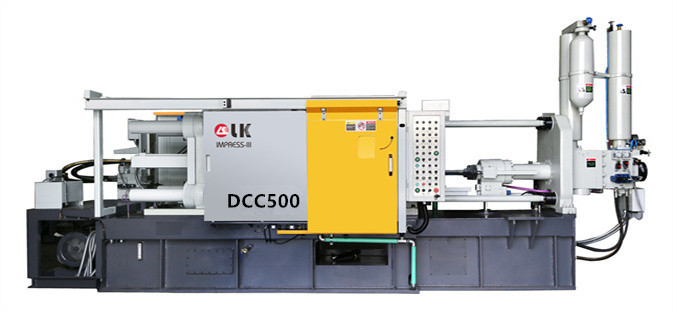Thread Bore
LK Die Casting Machine / 2024-09-04 14:55:28
2024-09-04 by Cherry
The relationship between thread bores and die-casting
machines
Thread bores play a key role in modern manufacturing,
especially in the use of die-casting machines. As the core
of precision parts manufacturing, thread bores, and
die-casting machines are closely related, and their interaction
determines the quality and durability of the final product.

What is a thread bore?
In simple terms, a threaded bore is a circular hole drilled
on the surface of a metal or other material, and a spiral
thread is machined around its inner wall. These threads
can be used with fasteners such as screws and bolts to
achieve a firm connection between different parts.
The thread bore's accuracy directly affects the connection's
reliability and the structure's overall strength.
The importance of thread bores in die-casting
Die-casting machines are a powerful force in industrial production.
Their high efficiency and precision provide solid guarantees
for product manufacturing in many fields. From automotive parts to
electronic product housings, from aerospace components to daily
household items, die-casting machines are everywhere.
In this process, the presence of thread bores gives die-casting
products more possibilities.
Die casting is a manufacturing process in which molten metal
is injected into a mold and formed into precision parts after
cooling and solidification.
In the die-casting process, the production of thread bores
is usually completed through subsequent processing after
the parts are formed but in recent years, more and more
manufacturers have begun to explore the possibility of directly
generating thread bores in the die-casting process.
This innovation not only saves production time but also improves
the consistency and reliability of parts.
Thread bores occupy an important position in the mold design
of die-casting machines. The mold is the core component of
the die-casting machine, and its quality and precision directly
determine the quality of the die-casting products.
Reasonable design of thread bores in the mold can achieve
rapid connection and assembly of die-casting products with
other components.

For example, in the die-casting process of the automobile
engine cylinder block, by setting thread bores on the mold,
various sensors and accessories can be easily installed to
improve the performance and reliability of the engine.
The accuracy of thread bores and the performance
of die-casting machines
The accuracy of thread bores is highly dependent on the
performance of the die-casting machine. Factors such as
pressure, temperature control, and injection speed of the
die-casting machine will affect the quality of the finished
product.
If the performance of the die-casting machine is unstable,
the thread bores may have dimensional errors or surface
defects, making it difficult to screw in the bolts, and even
affecting the overall strength and service life of the parts.
Thread bores also have a significant impact on the production
efficiency of the die-casting machine. In traditional processing
technology, thread processing usually requires a separate process,
which not only increases production costs but also reduces
production efficiency.
In the die-casting process, by directly forming thread
bores in the mold, the subsequent processing steps can be
greatly reduced and production efficiency can be improved.

At the same time, due to the high degree of automation of
the die-casting machine, continuous production can be achieved,
further improving production efficiency.
In addition, thread bores can also improve the accuracy and
quality of die-cast products. Since the thread bores are
formed in one go during the die-casting process, their
dimensional accuracy and surface quality can be well guaranteed.
Compared with traditional processing methods, die-casting thread
bores have higher strength and durability, and can better meet
the requirements of various complex working conditions.
Challenges in generating thread bores during die-casting
The technical requirements for directly generating thread bores
during die-casting are extremely high. First, the mold design
must be extremely precise to form a clear thread structure during
the molding process.
The thread bores on the mold must have precise dimensions
and good surface quality to ensure the quality of the die-casting
product. Secondly, the fluidity of the material and the temperature
control of the mold is also crucial, and the parameter control
of the die-casting process is also very critical.
Different alloy materials, die-casting temperature, pressure,
and other parameters will affect the molding quality
of the thread bores. Therefore, it is necessary to make
reasonable process parameter adjustments according to specific
product requirements and production conditions.
If these parameters deviate slightly, the quality of the
thread bores may be seriously affected and cannot meet
the matching requirements of the fasteners.
Thread bores processed after die-casting
Traditionally, thread bores are completed by machining
after the die-cast parts are formed. Although this method
increases the production steps, it can ensure the accuracy
of the thread bores. However, post-processing also faces
some challenges, such as the secondary heating of the material
may cause changes in internal stress, which in turn affects
the overall performance of the parts.
Application fields of thread bores
Thread bores are widely used in many industries, from
automotive parts, household appliances electronic devices,
which cannot be separated from the support of thread bores.
In these applications, die-casting technology is often used
to produce parts with complex shapes and high strength requirements,
and the presence of thread bores further improves the functionality
and assembly convenience of these parts.
1. Thread bores and die-casting machines in automobile
manufacturing
In the field of automobile manufacturing, thread bores
are often used for the connection of engines, transmissions,
and body structures.
These parts have extremely high requirements for precision
and durability, so the selection and operation of die-casting
machines are crucial. High-pressure die-casting machines
are often used to manufacture these key parts because they
can provide sufficient pressure and speed to ensure the
quality of thread bores.
2. Thread bores in electronic devices
In electronic devices, thread bores are used to fix the
housing and internal components. With the trend of miniaturization
of electronic products, the size of thread bores is getting
smaller and smaller, which puts higher requirements on the
accuracy of die-casting machines.
Some high-end die-casting machines can accurately generate
thread bores on tiny parts to meet the needs of the
electronics industry.
Innovative technology and future development
To meet these challenges, experts in the industry continue
to carry out technological innovation and research and development.
On the one hand, by adopting advanced CAD/CAM technology, the
precise design and manufacture of molds can be achieved, and
the quality and accuracy of thread bores can be improved.
On the other hand, through in-depth research on the die-casting
process, the process parameters are continuously optimized
to improve the molding quality and production efficiency of
thread bores.
With the advancement of science and technology, more and
more innovative technologies are being applied to die-casting
and the generation of thread bores. For example, 3D printing
technology is changing the way traditional molds are designed,
making it possible to integrate thread bores in molds.
In addition, the combination of CNC machine tools and die-casting
machines have greatly improved the accuracy of post-processing
thread bores.
Digitalization and intelligent manufacturing
The application of digital technology makes the parameter control
in the die-casting process more precisely, thereby improving
the processing quality of thread bores.
Through the intelligent manufacturing system, the status of
the die-casting machine can be monitored in real time, and
the injection parameters can be adjusted in time to ensure
that each thread bore meets the design standards.
Application of new materials
The emergence of new materials also provides more possibilities
for the generation of thread bores. For example, the use
of high-strength aluminum alloys and magnesium alloys improves
the lightweight level of parts while ensuring the strength
and durability of thread bores.
How to choose a suitable die-casting machine
Choosing a suitable die-casting machine is crucial to ensuring
the quality of thread bores. When choosing, the following
points need to be considered:
1. Pressure and speed of die-casting machine
High-pressure and high-speed die-casting machines are usually
able to better control the molding quality of thread bores,
especially when producing precision parts. This is particularly
important.
2. Design and matching of molds
The design of the mold directly determines the shape and
precision of the threaded bore. Therefore, the design of
the mold should match the performance of the die-casting
machine to ensure the stability of the production process.
3. Selection of post-processing equipment
If the thread bores need to be processed after die-casting,
it is equally important to choose the right post-processing
equipment. High-precision CNC machine tools can ensure the
dimensional accuracy and surface finish of the thread bores.
Conclusion
The importance of thread bores in modern manufacturing
cannot be ignored, especially in the die-casting process,
where their accuracy and quality directly affect the reliability
of the final product.
Selecting a suitable die-casting machine and optimizing the process
parameters, the molding quality of thread bores can be
effectively improved to meet the needs of various application
scenarios.
With the continuous advancement of technology, the combination
of thread bores and die-casting technology in the future
will bring more innovations and possibilities, injecting
new impetus into the development of the manufacturing industry.
I hope this article can help you gain a deeper understanding of
the relationship between thread bores and die-casting machines,
and provide a reference for your manufacturing process selection.
For more info, you can refer to:
https://www.tiktok.com/@lk_diecastingmachine/video/7405113006880820522
https://www.youtube.com/shorts/JLX410QV_kw
To learn further info about Die Casting Machines,
pls contact LK Die Casting Machine Authorized Official Agent
LK OFFICIAL AGENT OFFICE DCM
LK Die Casting Machine Authorized Official Agent for Egypt(EGY)
Saudi Arabia(ksa)
United Arab Emirates(UAE)
The Islamic Republic of Iran(Iran)
Qatar(QAT)
The State of Kuwait(Kuwait)
The Middle East
Address: 1. Industry Zone, South of Port Said Kebly, Cairo, Egypt
2. EX 14., EASTERN RING ROAD, AI RAYAN DISTRICT,
RIYADH, SAUDI ARABIA
Arabic Website: https://ae.zazdiecasting.com/
English Website: https://www.zazdiecasting.com/
Phone/WhatsApp/Wechat: 0086 13598704163
Mobile: +20 101 304 3317 +20 150 181 8310
Email: jack@zazmae.com ahmedmahmoud@zazmae.com
OTHER CONTENT
-

2024-09-19 14:16:15 LK Cold Chamber Die Casting Machine DCC900 Locking Force: 9000KN Die Height: 400-1000mm Space Between Tie Bars: 930x930mm Shot Weight: 13.5Kg Casting Area Max:2250c㎡
More -

2024-09-19 14:11:06 LK Cold Chamber Die Casting Machine DCC280 Locking Force: 2800KN Die Height: 250-650mm Space Between Tie Bars: 560x560mm Shot Weight: 2.9Kg Casting Area Max:700c㎡
More -

2024-09-19 10:23:07 LK Cold Chamber Die Casting Machine DCC580 Locking Force: 5000KN Die Heigh: 350-850mm Space Between Tie Bars: 760x760mm Shot Weight: 6.9Kg Casting Area Max:1250c㎡
More -

2024-09-19 10:11:20 LK Cold Chamber Die Casting Machine DCC400 Locking Force: 4000KN Die Height: 300-700mm Space Between Tie Bars: 669x669mm Shot Weight: 4.7Kg Casting Area Max:1000c㎡
More

